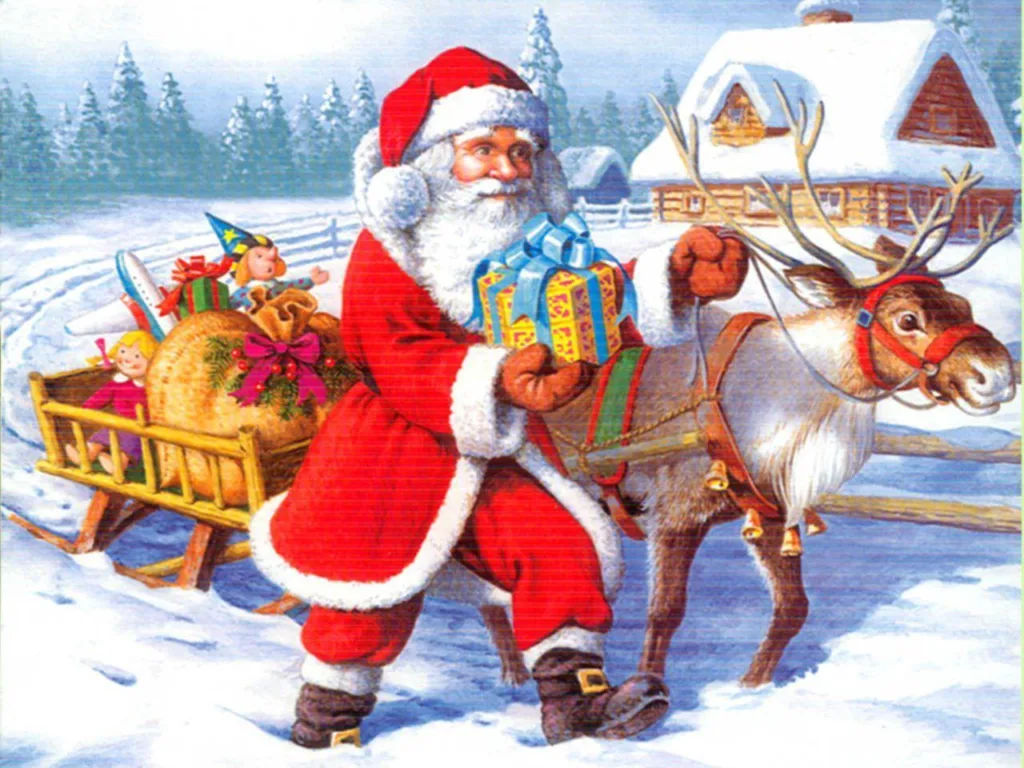Santa Claus, the rosy-cheeked, white-bearded figure in a red suit, has become a universally recognized symbol of joy, generosity, and the holiday spirit. The story of Santa Claus has evolved over centuries, blending folklore, traditions, and the spirit of giving.
Read More
In this extensive article, we will delve into the rich history, global variations, and enduring impact of the beloved figure known as Santa Claus.
Historical Roots
The origins of Santa Claus can be traced back to various historical and cultural influences. One of the primary inspirations is Saint Nicholas, a Christian bishop born in the 3rd century in what is now Turkey. Saint Nicholas was known for his acts of kindness, particularly toward children and the less fortunate. The celebration of his feast day on December 6th involved gift-giving and charitable deeds, laying the foundation for Santa’s benevolent persona.
Evolution of the Santa Image:
Literature, art, and commerce have moulded Santa Claus’s image. In Washington Irving’s 1809 book “Knickerbocker’s History of New York,” a pipe-smoking elf-like character distributed gifts on horseback. The 1823 poem “A Visit from St. Nicholas” (known as “The Night Before Christmas”) established the image of a chubby, happy Santa with a sleigh and reindeer.
Coca-Cola and the Red Suit:
One of the most identifiable visual elements of Santa Claus, the red coat with white fur trim, is thought to have originated from a Coca-Cola advertising campaign in the 1930s. The artist Haddon Sundblom produced a series of pictures showing Santa Claus cheerfully sipping Coca-Cola in an effort to solidify the public’s perception of the character as wearing a red outfit. The marketing campaign surely contributed to the normalization of this image, even if Coca-Cola did not originate the concept of donning a red costume.
Global Variations of Santa:
While the Western image of Santa Claus is pervasive, various cultures around the world have their own interpretations of the gift-giving figure.
1. Father Christmas (United Kingdom):
In the United Kingdom, Father Christmas is a figure similar to Santa Claus. He is often depicted as a bearded, festive man who delivers gifts to children on Christmas Eve.
2. Père Noël (France):
Père Noël, or Father Christmas, is the gift-bringer in France. He is often portrayed as a tall figure wearing a red robe, and children leave their shoes out on Christmas Eve for Père Noël to fill with treats.
3. Ded Moroz (Russia):
In Russian folklore, Ded Moroz (Grandfather Frost) is a winter figure who brings gifts to children. He is accompanied by his granddaughter, Snegurochka (Snow Maiden).
4. Kriss Kringle (Germany):
Kriss Kringle is a gift-bringer in parts of Germany and the United States. The name is derived from the German “Christkindl,” meaning Christ Child.
5. Joulupukki (Finland):
In Finland, Joulupukki is the Christmas figure who brings gifts. The name translates to “Yule Goat,” and Joulupukki is often portrayed as a friendly character with a long white beard.
Santa’s Workshop and the North Pole:
Santa’s Workshop at the North Pole is a popular Christmas myth. In this magical world, Santa and his elves spend all year making and wrapping gifts for children worldwide. A magical workshop adds fantasy to the Santa story, captivating young and old.
Rudolph the Red-Nosed Reindeer:
The story of Rudolph, the reindeer with the glowing red nose, is a relatively modern addition to the Santa Claus mythology. Created in 1939 by Robert L. May, Rudolph became a central figure in Christmas lore through a song, animated specials, and various adaptations. Rudolph’s tale conveys themes of acceptance, resilience, and the idea that everyone has unique qualities that can contribute to the greater good.
Santa Claus in Popular Culture:
Santa Claus has become an integral part of popular culture, making appearances in various forms of media, literature, and entertainment. Numerous movies, TV shows, and songs celebrate the magic of Santa and his impact on the holiday season. From classics like “Miracle on 34th Street” to contemporary animated films, Santa remains a beloved character who embodies the spirit of Christmas.
The Santa Experience:
The enchantment of Santa Claus is not limited to stories and images. Many communities offer “Santa experiences” during the holiday season. These experiences often include opportunities for children to meet Santa in person, share their Christmas wishes, and take photos. Whether in shopping malls, parades, or special events, the presence of Santa brings a sense of wonder and joy to the holiday season.
Santa as a Symbol of Generosity:
Beyond the folklore and festive imagery, Santa Claus stands as a symbol of generosity and the spirit of giving. The giving of gifts, which takes its cue from the legendary Saint Nicholas, has evolved into a major Christmas custom. Santa’s benevolence reflects the universal values of kindness, compassion, and the joy of making others happy.
Challenges to the Santa Mythos:
In recent years, discussions have emerged around the cultural relevance of the traditional Santa Claus narrative. Some critics argue that the image of Santa reinforces a Eurocentric view of Christmas and that it may not be inclusive of diverse cultural perspectives. Additionally, there have been conversations about the commercialization of Christmas and the pressure it places on families to fulfill materialistic expectations.
Conclusion:
Finally, Santa Claus has transcended his historical and cultural roots to become a cherished and enduring icon worldwide. Santa’s transformation from Saint Nicholas to a modern, joyful gift-giver reflects societal change. Santa Claus embodies the wonder of the holidays, the joy of giving, and the eternal attraction of folklore. Santa Claus represents hope, charity, and Christmas enchantment as we celebrate Christmas.
Share this content:

